Last Updated on November 19, 2025 by Ewen Finser
There are two kinds of people in a company: the ones who use the SOPs, and the ones who write them. If you’ve ever been the latter – the Executive Assistant, the Ops Lead, the HR coordinator – you know the pain. You’re the one who people Slack when they can’t figure out the new time entry system for payroll, or when a client needs a walkthrough on the platform that was updated yesterday.
That was me. I lived in SOPs. HR onboarding guides, finance reimbursements, how-to checklists for sales to learn the CRM. I built them all. And then I built them again every time an interface changed (or an executive changed their mind). My toolkit was screenshots, arrows, PDFs, and Loom videos that people swore they would watch but never did. I didn’t just manage workflows; I managed documentation about workflows – and it ate hours I didn’t have.
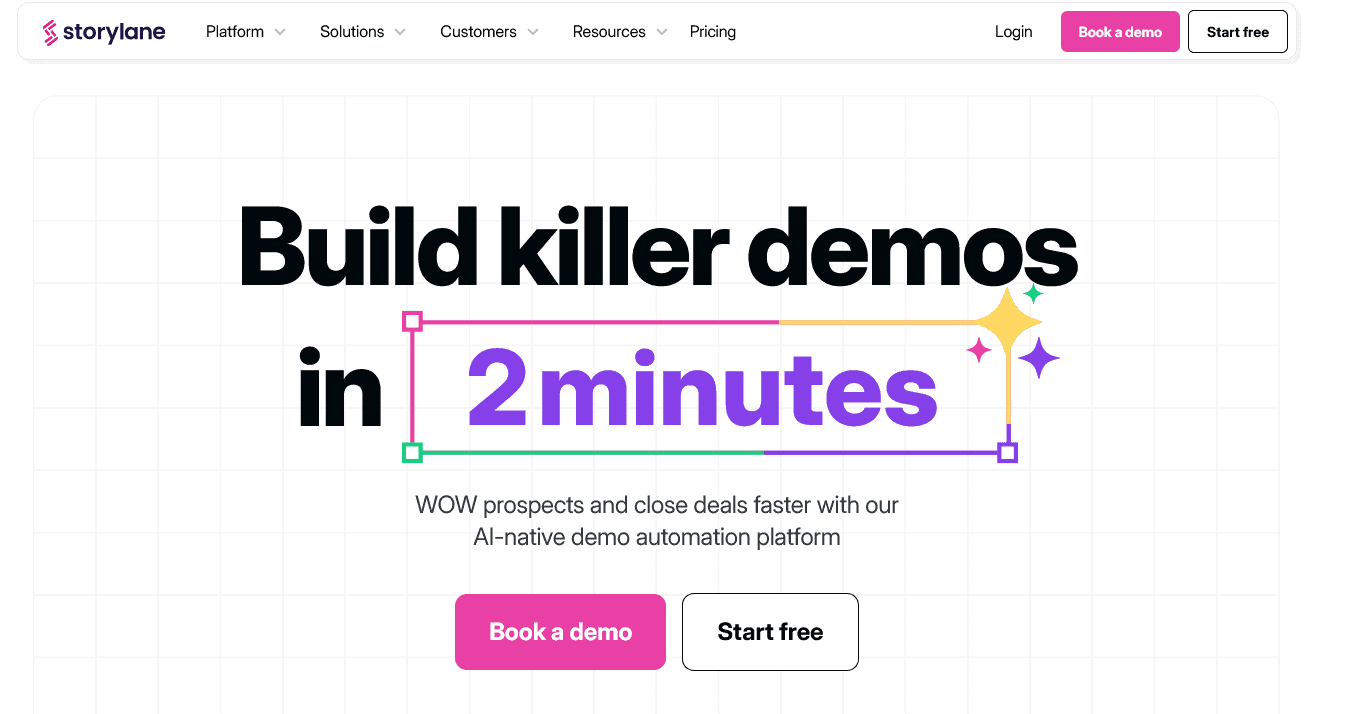
So when tools like Storylane started getting buzz, I thought: finally, something different. And Storylane is different. It’s slick, interactive, polished. A demo that feels like the real product. Fantastic for sales and marketing teams trying to win over prospects.
But for building internal operations and documenting simple SOPs? Storylane could be overkill. It’s time-consuming to update fast-changing processes. And pricey to justify if you aren’t on a sales budget. Beautifully polished, but not necessary for HR onboarding forms or quick videos on How to update your direct deposit information in payroll. That’s why I started looking at what else was out there. And that’s what this article is about – not just what tools can compete with Storylane, but which ones work for people like me. The ones in the trenches. The actual backbones of their companies.
Because let’s be honest: the ops team doesn’t need a shiny showpiece. They need something practical that cuts down on rework and saves me from answering the same question for the fiftieth time. If you’ve ever felt like the unofficial help desk of your company, this breakdown is for you.
So let’s talk Supademo, Navattic, Demoboost, and Guidde – four Storylane alternatives to help you create the demos people will actually use.
Supademo: The Fast One
Supademo’s whole thing is speed. If Storylane is a gourmet kitchen, Supademo is a food truck: smaller menu, but you’re eating in five minutes. You can record, stitch together screenshots, and drop in clips to build an interactive walkthrough without coding or overthinking.
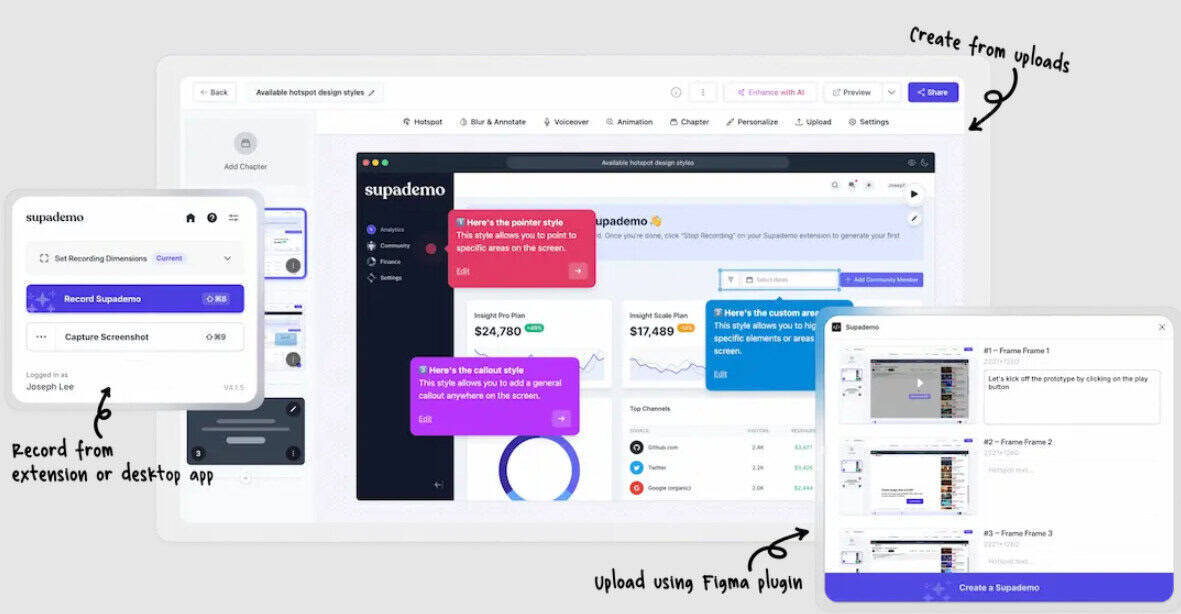
That speed would’ve been a lifesaver in my EA days. When HR brought in a new hire and needed onboarding materials, I could’ve thrown together a PTO request demo before lunch. When finance swapped expense platforms for the third time in a year, I could’ve updated a few steps and pushed it live in minutes instead of re-recording a Loom. Supademo turns the painful cycle of document, update, re-document, into something manageable.
But speed comes with trade-offs. Supademo isn’t built for deep analytics. You’re not going to get funnel reports showing exactly where users clicked away. It also doesn’t shine in super complex, branched demos where users choose multiple paths. It’s more “linear walkthrough” than “choose-your-own adventure.”
For me, that’s okay. Most of my documentation needs weren’t about data collection or branching logic. They were about clarity and speed. Supademo would’ve kept me sane by cutting hours off every SOP update. And for smaller teams or scrappy departments without enterprise budgets, that balance makes it a strong Storylane alternative.
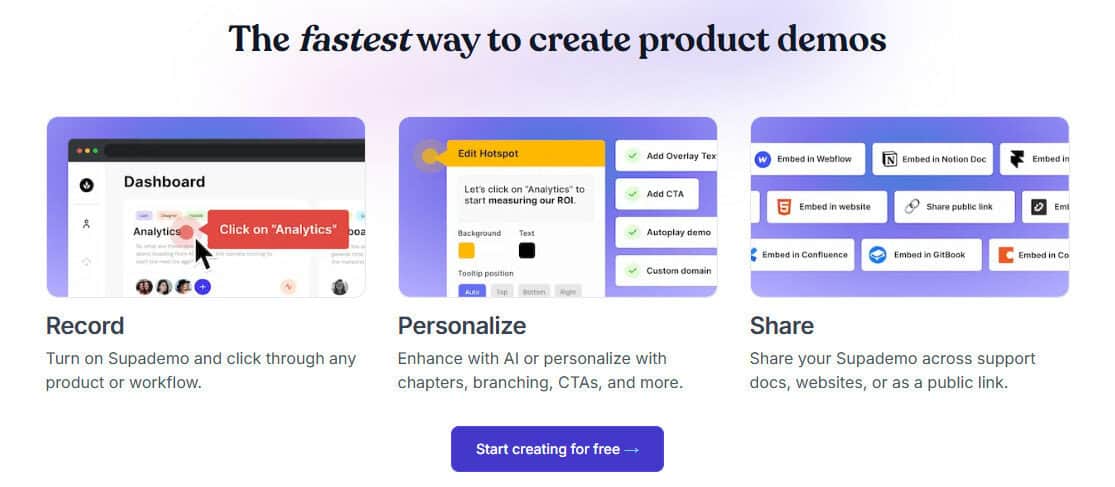
Where I can see Supademo shining today is in startups or lean teams that have to move fast. Marketing wants a quick interactive demo for a landing page? Done. Customer success story needs a short how-to on resetting passwords? Done. It’s not the Cadillac of demo tools, but it’ll get you there without burning fuel you don’t have.
The other big win here is adoption. Supademo doesn’t require weeks of training to use. You don’t need to beg IT for permissions. Anyone on your team can pick it up and be productive almost immediately. And when you’re already stretched thin, not having to onboard the tool itself is a blessing.
Navattic: The Polished One
If Supademo is the food truck, Navattic is the five-star restaurant. Their demos look like the real product – smooth transitions, hover states, clickable paths. They’re built to impress. I think of Navattic as the kind of tool you’d see embedded on a SaaS website, right under the “See how it works” button.
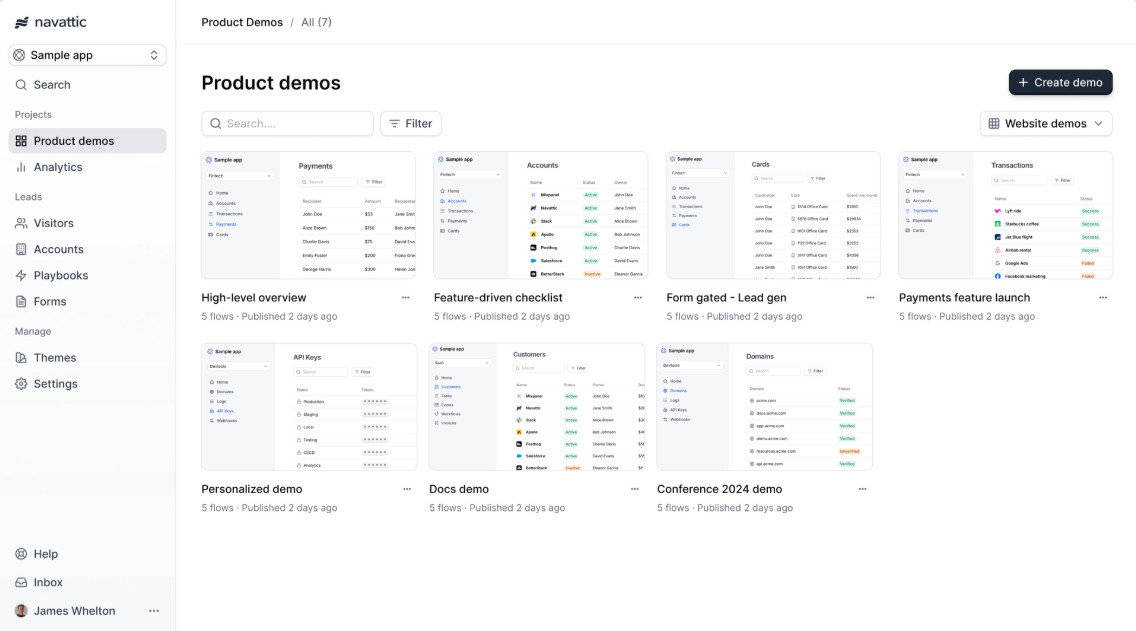
For marketing, it’s brilliant. You can gate demos with forms, capture leads, and analyze exactly where prospects drop off. For sales teams, it’s a way to put a prospect inside the product without setting up a sandbox environment. The polish pays off when your goal is to wow.
But here’s where my ops brain looks at it differently. Would Navattic have helped me build HR onboarding? Probably not. It’s too pretty for payroll. I don’t need slick hover states when I’m training someone to request PTO. The build time is also heavier than tools like Supademo. And the price? Definitely designed for marketing budgets, not HR or admin.
That said, Navattic would have been useful in certain cases. Client training, for one. Imagine rolling out a new SaaS platform to dozens of clients at once and giving them a guided tour that feels like the real product. That’s where Navattic shines. It’s not the everyday workhorse for internal processes, but it’s an incredible showpiece for external audiences.
As a Storylane alternative, it sits in the same category: polished, client-facing, lead-capturing demos. If that’s your need, Navattic is a contender. But for the daily grind of ops, it’s more than you need and more than you want to pay.

Still, I can’t deny the psychological effect of polish. A Navattic demo makes your company look bigger than it is. For scrappy startups chasing enterprise clients, that kind of impression can close deals. It won’t help your HR team file payroll faster, but it might land you the next big account. And that’s worth knowing when you’re weighing options.
Demoboost: The Custom One
Demoboost is the Swiss Army knife of demo tools. Overlays, embedded forms, translations into over 100 languages, password protections, expiration dates – you name it, it’s probably in there. It’s built for teams who want total control over how demos look, who can access them, and how they’re used.
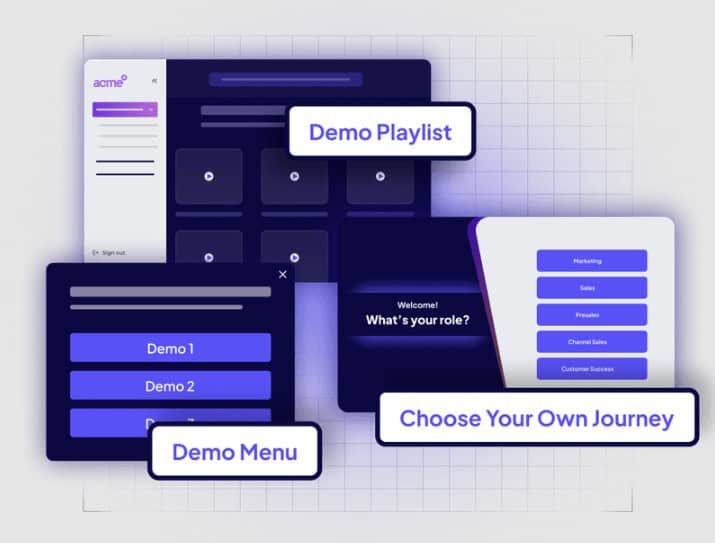
For everyday SOPs, it’s heavy. I don’t need a password-protected demo to show someone how to download and log in to Slack. But in certain scenarios? Demoboost would’ve been gold. When I think back to rolling out compliance training or supporting teams in multiple countries, I can see the appeal. Building one demo and translating it instantly for a team in Brazil would’ve saved me hours of manual translations. And if you’re handling sensitive processes, the access controls make a difference.
The trade-offs are real. It’s not a grab-and-go tool. You’ll need onboarding to learn how to use it properly, though reviews say their customer service is strong. It’s also less visible in the market, so you won’t find as many community templates or examples. But for enterprise-level teams with global reach and strict requirements, Demoboost is powerful.
As a Storylane alternative, it tilts toward customization and security. If you need translations, overlays, and tight control, it’s worth a look. If you’re just documenting PTO requests, it’s more than you’ll ever need.
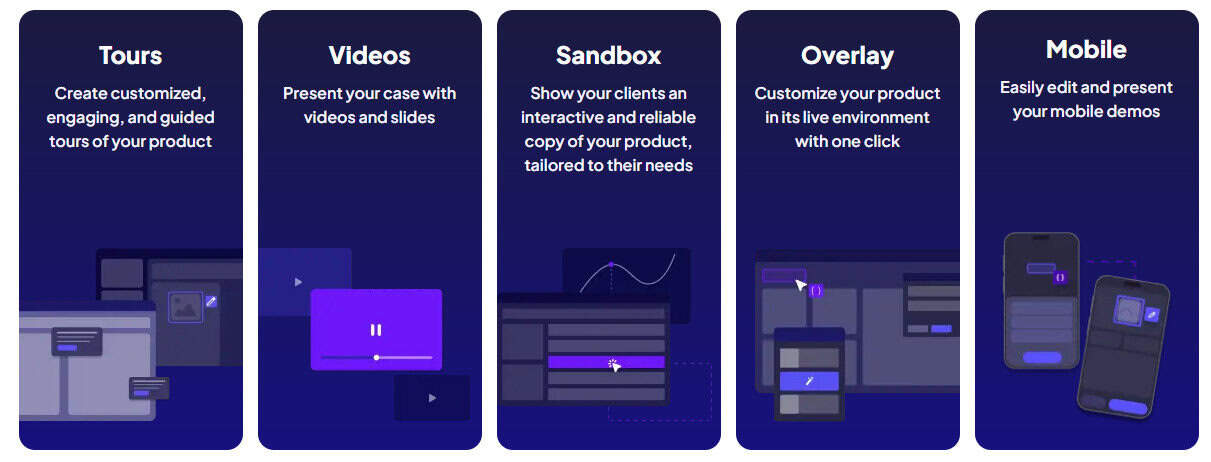
Where I see Demoboost fitting best is in industries where compliance isn’t optional – finance, healthcare, government contracting. If your documentation has to meet legal standards or training has to be delivered in multiple regulated markets, the overhead is justified. It’s not the tool for your day-to-day onboarding, but for high-stakes training? It’s one of the few that checks all the boxes.
Guidde: The Hybrid
If Supademo is the food truck and Navattic is the five-star restaurant, Guidde is the home kitchen you actually use every single day. It’s not flashy, but it’s where the real work gets done. The meals aren’t plated for Instagram – they’re practical, nourishing, and keep the whole household running. That’s Guidde for ops: the everyday tool that feeds the machine without stealing your time.
Guidde doesn’t try to be a sales demo machine. It’s documentation, but smarter. You hit record with their Chrome extension, and Guidde auto-generates step-by-step instructions including highlights and narration. No more typing “Step 2: Click the green button” while flipping between screenshots – Guidde handles it. You can swap in your own voice, or let the AI narrate for you.
Guidde puts it ALL together for me. I've used many screen recording tools (like Loom). I've used many SOP buiding tools (like Trainual). But Guidde puts the best of both together for a quick, easy to use mixed media documentation builder in one (less expensive) workflow. A small, but signficant (compounding) time saver in our business.
And the best part? It’s versatile. I would’ve used Guidde for everything: HR onboarding, finance reimbursements, IT troubleshooting, client training. There’s even an option to add branding colors to keep it uniform. Instead of scattering SOPs across Google Docs, PDFs, and half-watched Looms, I could’ve had clean, reusable guides that looked professional and didn’t take me hours to produce.
It’s not perfect. Navattic still wins if you need polished website demos. Demoboost still rules for global rollouts and tight access control. Supademo still has the edge on lightning-fast updates. But Guidde quietly covers more ground than any of them. It’s not just for marketing or sales – it’s for everyone who actually has to keep the company running.
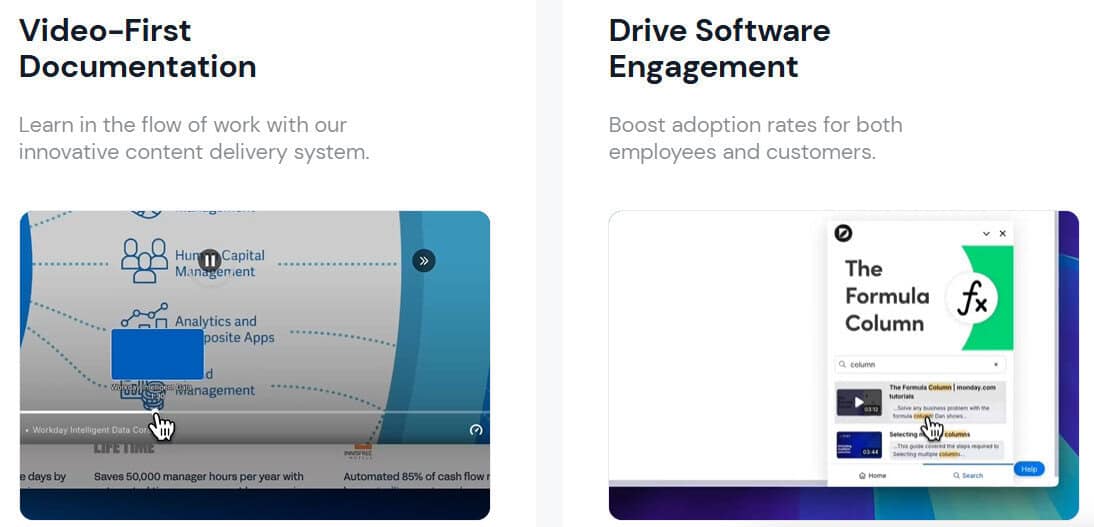
For me, that’s why it stands out. Not obviously, not with a giant neon sign screaming BEST CHOICE! Just practically, in the ways that would’ve saved me hours of grunt work and let me focus on strategy instead of screenshots.
And here’s the kicker: Guidde doesn’t just save you time once. It compounds. Every time your product changes, every time HR updates a policy, every time finance tweaks a workflow, you can update the guide in minutes. Over the course of a year, that’s dozens of hours clawed back – hours you can spend on higher-value work instead of babysitting screenshots. That’s the kind of leverage I never had, and it’s why Guidde feels like the tool I wish I’d had years ago.
Final Word
Being the person responsible for documentation is a thankless job. You spend hours creating SOPs that half the company doesn’t read, only to redo them when the software changes a button color. Tools like Storylane elevated the idea of demos and gave sales teams something flashy, but they don’t always fit the reality of HR, finance, and operations.
Supademo solves for speed. Navattic solves for polish. Demoboost solves for control. And Guidde? Guidde solves for the rest of us – the ones who actually have to keep the trains running on time.
At the end of the day, your choice of tool depends on what problem you’re solving. If your goal is to wow prospects, polish matters. If your job is global compliance, control matters. But if you’re the person holding everything together behind the scenes, what matters most is practicality. The tool that gets used. The one that makes your life easier instead of more complicated.
That’s why Guidde edges out as the most practical Storylane alternative for me. It may not be the most glamorous, but it’s the tool that saves time, reduces chaos, and finally makes documentation feel manageable. And in a world where the people like me are stretched thinner than ever, a tool that gives you back even ten hours a month isn’t just a “nice to have.” It’s survival.



